Feature stories, read aloud: Download the Audm app for your iPhone.

To get to this place, you drive for miles over serpentine, unpaved roads that climb through oak and juniper forests in southeast Arizona’s Patagonia Mountains, then descend through canyons filled with cottonwoods, sycamores, fleabane, and flowering goldeneye until you reach four strands of barbed wire. Twenty years ago, an unlocked cattle gate opened from here into Latin America. Neighboring ranchers from both sides used it to trade livestock. I lived nearby at the time, and I’d drive through it down to Santa Cruz, a village surrounded by apple orchards, six miles below the border. No one ever stopped me, coming or going.
There was no other road for miles in either direction. But after 9/11, the Department of Homeland Security scraped a wide and dusty one along the U.S. side, not without considerable difficulty in this up-and-down country. Between the new road and the barbed-wire cattle fence—its gate long gone—they installed miles of Normandy-style fencing: vehicle barriers, comprised of crisscrossed sections of welded railroad track, resembling a long line of metal Xs.
Northbound tire tracks leading to it confirm how easily Normandy fences are breached with portable ramps. The hard caliche soil doesn’t reveal other, softer tracks, but they’re here too. This 15-mile stretch of border, where the Patagonias meet Mexico’s Sierra San Antonio, is one of the few places where wildlife still pass relatively freely through the increasingly militarized divide between two nations. Fox, coatis, mountain lions, Mexican gray wolves, and even bears are among the creatures that can and still do squeeze between these rails.
A hundred miles east of here, in March of 1996, an Arizona rancher and hunting guide named Warner Glenn saw a new species—at least new to him. He was just over the Arizona line, about a mile into New Mexico and 10 miles north of old Mexico, when his dogs suddenly raced ahead of him. When Glenn’s mule caught up, he saw that they’d surrounded something feline. It was far bigger than a mountain lion, with huge yellow eyes and a fabulous golden pelt dappled with rosettes. Glenn dropped his rifle and grabbed his camera.
Six months later and 50 miles west of the Patagonias, a hunter in the Baboquiviri Mountains treed and photographed another jaguar. At least five more have been photographed since, including two new ones just this past year (individuals are identified by the patterns of their spots). The presence of these cats, which are believed to be migrating north from breeding grounds in Mexico, has thrilled wildlife biologists and captivated the public.

Found only in the Americas, jaguars are the world’s third biggest cat, after lions and tigers. Older males can top 300 pounds, more than twice the size of the slimmer leopards they resemble, and with which they share a prehistoric ancestor. Their formidable jaws can instantly kill prey as big as the 10-foot caimans and adult bears they silently stalk, pouncing from behind and crunching through their victims’ skulls. Unlike any other big American feline—mountain lion, lynx, or bobcat—they also roar.
Today only about 15,000 remain, mainly in the tropics. Once, Panthera onca roamed and bred as far north as the Grand Canyon, and from California to Louisiana. Then, after 1915, when the U.S. Department of Agriculture started paying bounties on anything non-human that ate livestock, nearly one jaguar per year was shot in Arizona alone. Among the last was a female killed in 1963, in a spruce-fir forest above 9,000 feet. Predator controls, it was presumed, had effectively extirpated them in the United States. Now, their reappearance has ignited a furor over what protections they should have against development and the threat of a significantly fortified border wall.

To see where these recent feline immigrants were coming from, I headed 150 miles south into Mexico’s state of Sonora last August for a river trip organized by the Arizona-based Northern Jaguar Project. With its Mexican counterpart, Naturalia, the non-profit NJP had raised over $2 million to purchase 86 square miles in the northernmost known jaguar-breeding area in the Americas. The two rivers we’d be navigating—the wild, undammed Río Aros, which drains Mexico’s Sierra Madre Occidental, and the Río Yaqui, into which it flows—form much of the reserve’s boundary.

(Photo: McNair Evans)
The Northern Jaguar Project was founded in 2003 by ecologist and self-described “bio-gladiator” Peter Warshall, who edited both the Whole Earth Catalog and CoEvolution Quarterly, and his wife, Arizona historian and former rancher Diana Hadley, when a Mexican zoologist alerted them to a cheap ranch for sale in prime jaguar country. After Warshall died of cancer in 2013, Hadley has continued to run the operation from their Tucson home with the help of just one full-time staffer. With support from foundations, such as the Disney Conservation Fund, and from private donors—including a biologist on this trip, who tithed a portion of a windfall inheritance—NJP has purchased five former ranches that now comprise the reserve.
Now in her seventies, Hadley drove us the eight hours from Tucson—including an hour-long wait at the border for crossing permits—down a sinuous highway to Sahuaripa, Sonora, population 6,000. From there to the river launch, just 30 miles, took another seven hours over a vertiginous, rutted track intended for mules, which is intentionally left unmaintained to deter poachers. Not that many would attempt it: Eons of volcanic episodes created the Sierra Madre, leaving this landscape so corrugated that even cow-punching is precarious. The abundance of both predators and prey in this place, where Apache chieftain Geronimo often hid, owes as much to low human population as it does to high biodiversity.
We were headed by boat into one of nature’s most breathtaking collisions of geology and biology. High above the Sierra’s palm- and poinsettia-filled river canyons grow pine, madrone, and more than 200 species of oak. Bald eagles and military macaws, in the southern and northern extremes of their respective breeding ranges, nest on towering red cliffs. Conservation biologist E.O. Wilson lists this deeply gouged Madrean uplift, running from central Mexico into the southwestern U.S. borderlands, where it fragments into an archipelago of sky islands, such as the Patagonias and the Baboquiviris, among his three dozen “best places” on Earth.
Nevertheless, of the Sierra’s three apex predators, the grizzly bear was gone by the mid-20th century, and the Mexican gray wolf barely hangs on. But the third, the jaguar, not only survives, but may be expanding both its numbers and its range.
“In a place where a desert collides with pines, jaguars find plenty to eat: deer, peccaries, coatimundi, hares,” explained NJP biologist Miguel Gómez, a compact, lithe man in his thirties from Querétaro in central Mexico. Sheathing the machete he’d been using to clear the riverbank of amaranth for our first campground, he swigged from an unlabeled plastic bottle, which he passed to me. “We have pictures of them carrying skunks in their mouths.”
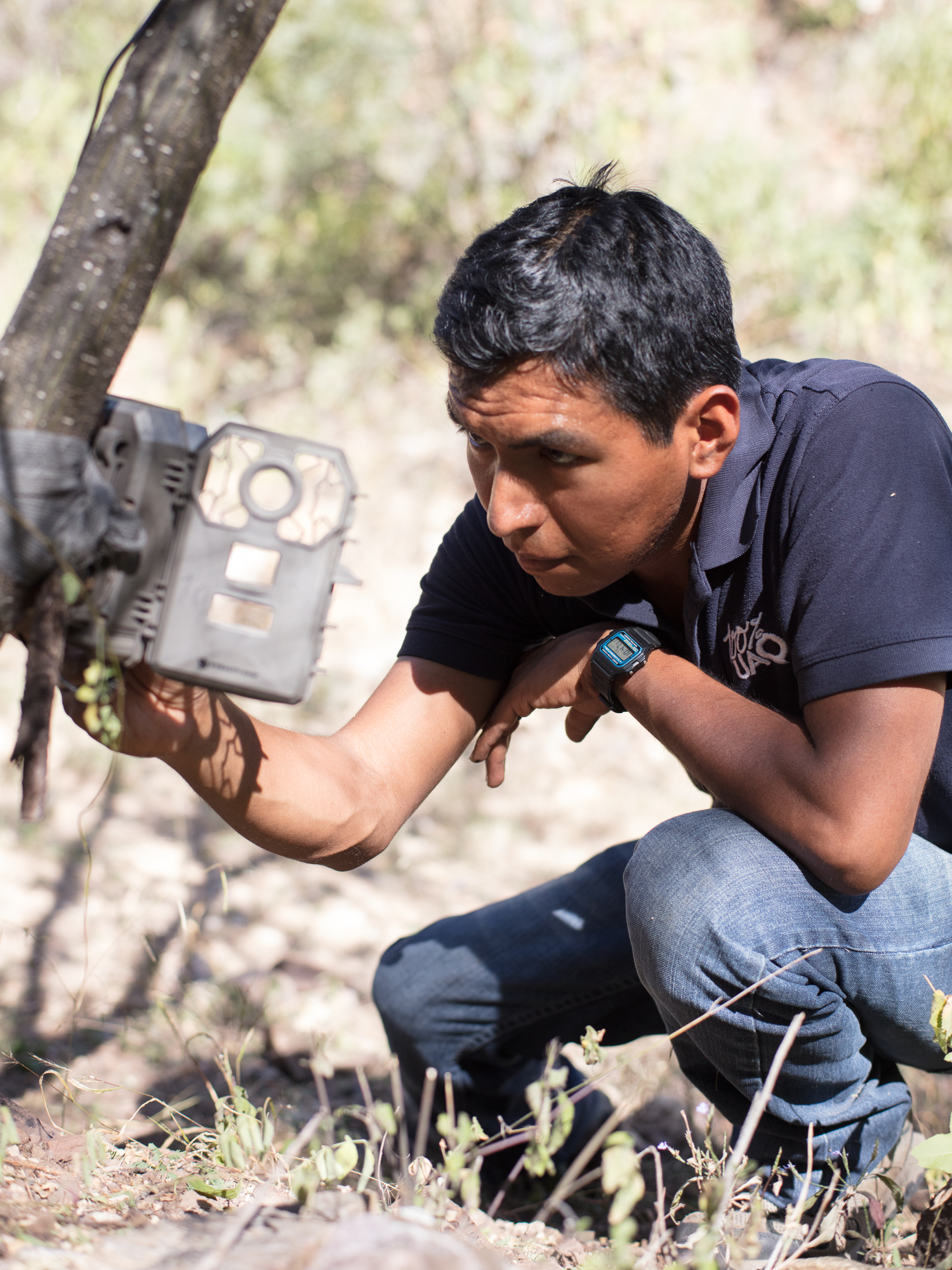
(Photo: McNair Evans)
The camera traps that Gómez and his biologist wife, Carmina Gutiérrez, monitor here and on surrounding ranches have captured thousands of images and videos of jaguars, ocelots, pumas, bobcats, and their prey. One of those ranches had distilled the bacanora—Sonoran mezcal—we were sharing with two of our boating companions, both of them former eco-saboteurs with the radical environmental group Earth First!. In the 1980s, Todd Schulke scaled tuna-boat masts to unfurl banners protesting dolphin slaughter, while Mikal Jakubal perched in tall firs slated for clear-cutting and rappelled down dams to paint giant cracks on their faces.
Now in their graying fifties, the men hadn’t seen each other in decades. In the intervening years, Jakubal had descended from the trees and settled into the soil as a Humboldt County, California, licensed cannabis nursery owner. Schulke was still an active environmental warrior, but his tactics had changed. In 1989, he co-founded the Center for Biological Diversity, which, instead of breaking laws like Earth First!, used them as bludgeons.
Earlier that year, Schulke and two friends had been contracted to survey a spotted owl subspecies in New Mexico when they decided that their employer, the U.S. Forest Service, had no intention of letting some rare nocturnal bird stop timber sales. Wielding the Endangered Species Act with uncommon tenacity, they filed multiple lawsuits and eventually won enough federally designated critical habitat for Mexican spotted owls—which restricts activities or development that might threaten them—to practically halt industrial logging in the American Southwest.
Ever since, CBD lawyers have tormented U.S. federal agencies far more than Earth First! ever did, winning 83 percent of the 900-plus actions they’ve filed on behalf of imperiled plants and animals. The group is controversial, even among conservation organizations, for its hard stance, which often puts the needs of non-human species ahead of human priorities. Among their most celebrated successes was their campaign to get jaguars officially listed as an endangered species in the United States in 1997, despite the insistence of the U.S. Fish and Wildlife Service that the only habitat crucial to their survival was their breeding grounds in Mexico. Three CBD lawsuits later, the FWS was forced in 2010 to designate 1,200 square miles of southern Arizona and New Mexico as critical jaguar habitat, and to design a jaguar recovery plan.
Our chances of actually seeing one in the Northern Jaguar Reserve, we knew, were almost nil—jaguars are exceptionally furtive. But for a week we would see something even rarer: no other people, nor electric lights. Except for the occasional whir of Mikal Jakubal’s solar-charged drone, shooting 360º panoramas from 1,500 feet, we heard no mechanized din. Our phones were useless. Nor, amid melodious Sinaloa wrens and blue mockingbirds, were they missed.

“This used to be part of their native range. They’re reclaiming it,” said Chris Bugbee when, a week before I went to Mexico, I’d asked him why he thought jaguars were coming north into Arizona. Bugbee, a burly young freelance biologist, and Randy Serraglio, conservation advocate for the CBD, had brought me to America’s preeminent jaguar battlefield. “Male jaguars can wander 100 miles or more each year before returning to the breeding grounds,” he explained. “As conservation improves in Mexico, more young males need space to roam, until they’re big enough to challenge older males for mates.”
We were standing at a highway overlook in the Santa Rita Mountains, a range northwest of the Patagonias and halfway to Tucson. Before us lay an old ranch, Rosemont, amid a medley of outcropped ridges and intricate foothills overlain with a juniper-dotted grassland. Behind them rose the saw-toothed Santa Ritas. This stunning spot—a patchwork of private and Forest Service land—sits at a crucial juncture of three wildlife corridors, Bugbee explained. From late 2012 to October of 2015, Mayke, a female Belgian Malinois sniff dog that Bugbee trained, had repeatedly found scat nearby from a male jaguar, which camera traps had now photographed more than a hundred times.

It is also the exact site of what will be America’s third biggest open-pit copper mine—unless the Center for Biological Diversity and its many partners in protest can stop it.
The mine’s developer, Toronto-based Hudbay Minerals Inc., acquired the mineral rights to Rosemont in 2014, when it purchased the Augusta Resource Corporation—also Canadian. In the U.S., these companies have ancient law on their side: the General Mining Act of 1872, signed by Ulysses S. Grant to attract white settlers to the West. It allowed the original developer of the site to acquire mineral rights to more than 2,000 acres at a price unchanged since the law was enacted: $5 an acre. For the Rosemont mine, Hudbay plans to dig a hole more than a mile across and a half-mile deep. Besides obliterating a priceless view along an official Arizona scenic highway, opponents charge that the mine will stack tailings hundreds of feet high over five square miles of National Forest.
Just eight miles away is Madera Canyon, home to 250 bird species, among the most visited attractions in a state where, according to a study commissioned by Arizona Game and Fish and the Tucson Audubon Society, wildlife-watching earns $1.4 billion annually.
“Imagine how many tourists and birds they’ll get with a mine blasting under lights all night, and ore trucks clogging the scenic highway,” said Serraglio, stroking his goatee. “Even worse, digging the pit will create a cone of depression that the water table will be drawn toward like a straw. Springs will be dewatered, or simply buried.”
Serraglio pointed to a line of tall cottonwoods seven miles to the east, bisecting a vast, grassy valley.
“That’s Cienega Creek. It’s not just life support for 12 endangered species; it provides 20 percent of Tucson’s natural groundwater recharge. That straw will suck it right down. Instead of water, Tucson will get mining dust.”
For a while, the endangered and federally protected spotted cat roaming the Santa Ritas seemed like the key to stopping the Rosemont mine—which, over several years and multiple owners, had spent millions on public relations, and was promising hundreds of high-paying construction jobs in an economy where nearly one-fifth live below the poverty line. But when a hunter’s camera captured the unmistakable tail of a jaguar so unexpectedly close to town, the CBD saw its own publicity opportunity, and invited a Tucson middle school whose mascot is the jaguar to hold a naming contest. The winning name was El Jefe, Spanish for The Boss—coincidentally also the nickname of Arizona Congressman Raúl Grijalva, who has tried for years to get the 1872 Mining Act repealed.
The timing was perfect for a heartwarming jaguar story in the city’s backyard. Arizona was still reeling over a jaguar scandal from 2009, when an aging male named Macho B was snared, darted, drugged, and collared by researchers working for Arizona Game and Fish. Wounded during capture, the jaguar developed an infection within days, and was finally recaptured and euthanized by the Phoenix Zoo.
In a cascading public-relations disaster, a whistleblower revealed that female jaguar scat was used to lure Macho B to a snare permitted only for lions and bears. Even the euthanization was botched, as a postmortem later suggested the jaguar wasn’t suffering from kidney failure but merely dehydrated. Deeper organ and skin analysis, which might have confirmed the cause of death, had been nixed by Arizona Game and Fish in order to preserve his pelt for mounting.
Macho B’s trapper, a contract biologist, was convicted of a misdemeanor for taking an endangered animal. Officials from both Arizona Game and Fish and the U.S. Fish and Wildlife Service who, court documents revealed, had encouraged the illegal capture, weren’t prosecuted. An exhaustive investigative series on the Macho B cover-up in Tucson’s Arizona Daily Star described a virtual cat fight among wildlife agencies to see who could nab an American jaguar first—with the presumption that juicy federal study grants would inevitably follow.
“Which keeps happening,” Bugbee said. “Big carnivore studies do bring out the carnivore in scientists.”
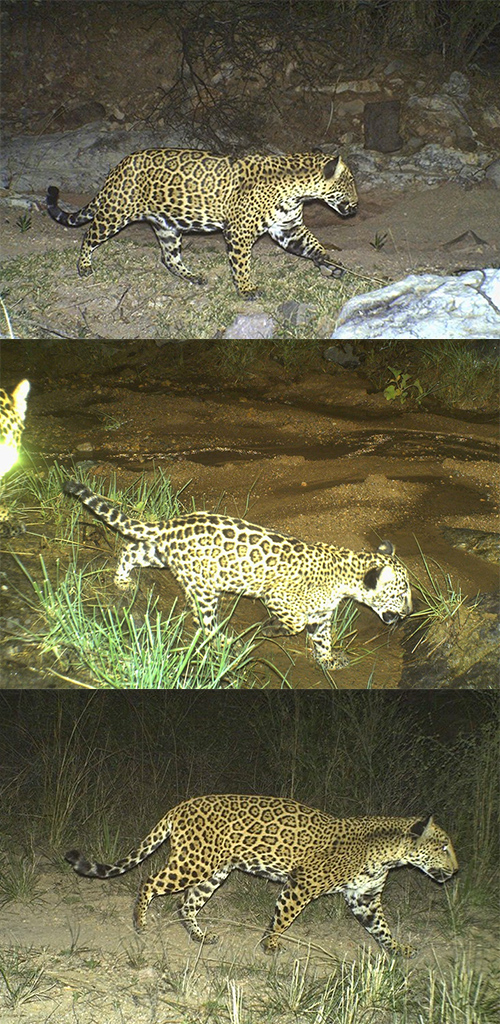
(Photo: Northern Jaguar Project/Naturalia)
He should know. Bugbee’s alliance with Randy Serraglio could have cost him his career. That all started with a $771,000 jaguar study grant in 2012 from the Department of Homeland Security—ironically, to determine the extent that its border wall impedes the free flow of protected wildlife. The award went to the University of Arizona’s Wild Cat Research and Conservation Center, presumably because Arizona Game and Fish was too tainted by the Macho B debacle. When the university then hired some of the same state and federal wildlife personnel who were implicated in the Macho B affair, the controversy continued.
Meanwhile, a New York Times op-ed by a noted jaguar expert, Alan Rabinowitz, argued that spending money on jaguars in the U.S. was wasteful, as the absence of females belied that they actually reside here. The editorial shocked Arizona biologists, who believe that Rabinowitz, chief executive officer of a tropical jaguar conservation program, feared competition for funding, though Rabinowitz denies it. Geneticist Melanie Culver, lead investigator of the University of Arizona study, pointed to research showing that, with tigers, long-distance dispersing males are always the first arrivals in a new population, because females with cubs stay close to known food sources.
“But eventually,” Culver said, “if the original population is at carrying capacity and the new habitat is viable, females follow.”
More important, she said, was how natural selection works. “At a population’s edge, individuals must adapt to different pressures.” As conditions in the core breeding area change, she added, “their genes may suddenly be more desirable to the rest of the population. By hanging onto individuals at the fringes as well as the core, you hang onto the most diversity.” With species adaptation now happening in hot, drying climates, Culver reasoned that jaguars everywhere may benefit from this expanding population, including the pioneer males braving Arizona’s desert.
This theory was underscored by evidence from some of her project’s 240 motion-activated cameras, placed in 16 mountain ranges, which began capturing images of other smaller but equally beguiling spotted cats: ocelots. No ocelots had been recorded in Arizona since 1964, but they’d now photographed five since 2009. One of Culver’s graduate students at the time, Aletris Neils, who’d been following research on the northward movement of opossums, coatis, and javelina—in response, she suspected, to climate change—added ocelots to her list.
When Neils learned that her mentor needed a sniff dog to collect jaguar scat for genetic testing, she mentioned that her partner (now husband) trained them. Chris Bugbee was studying alligators in the Everglades when he met Neils, who was studying crocodiles at the time: instant love. Although reptiles were his passion, felids were hers, and he followed her to Arizona for a graduate program that annually took her to study African caracals. He’d been working contract biology jobs and training dogs to avoid rattlesnakes when the university hired him to find jaguars.
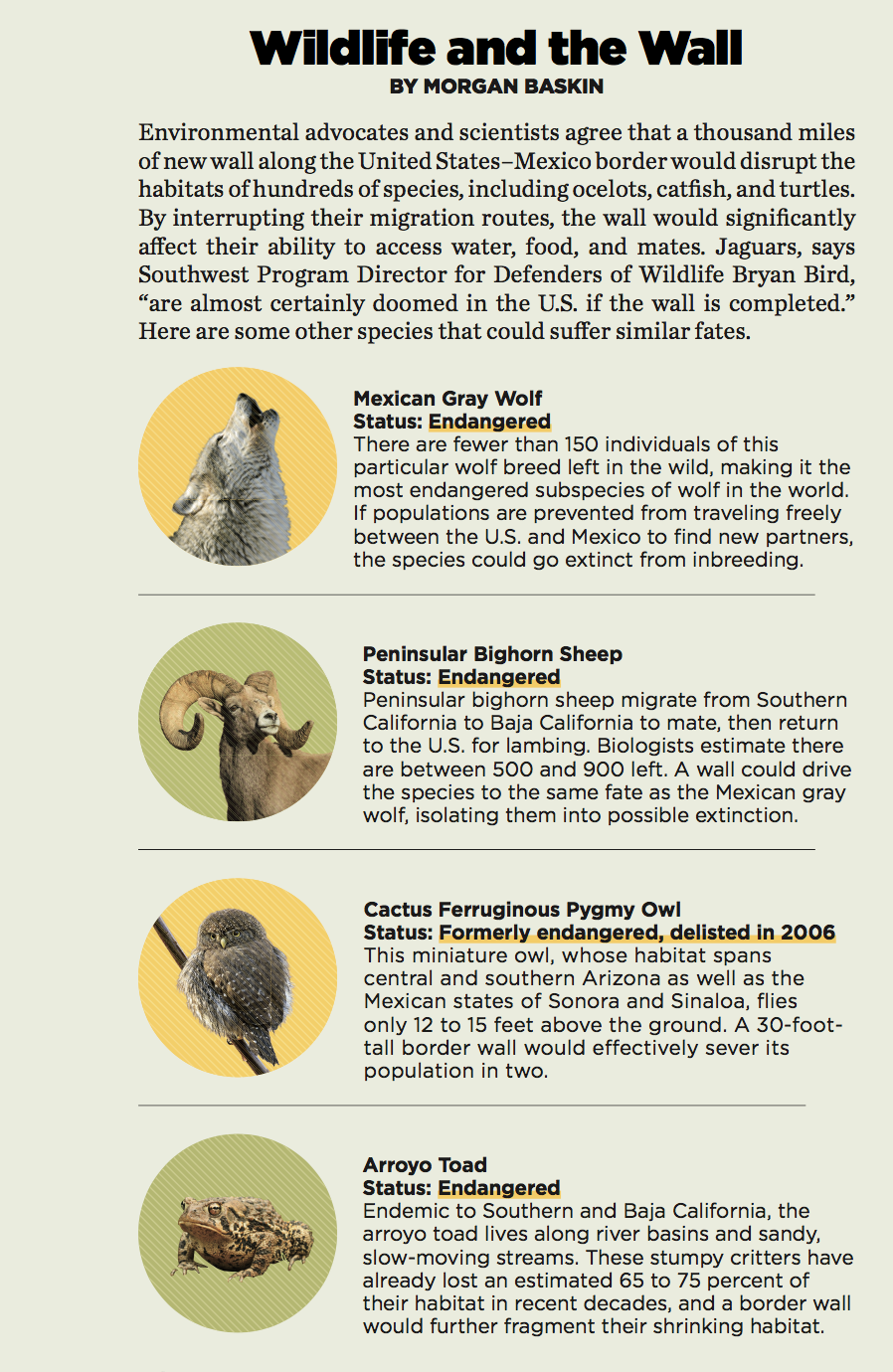
After that first sighting of El Jefe, he focused his search on the Santa Ritas. Using Google Earth, he identified tight canyons where a young male jaguar passing through could be easily camera-trapped. He and Mayke discovered that, unlike mountain lions, which mark territory with mounds of droppings, El Jefe discreetly left his scat high on rock ledges, just as young tigers hide their presence until they mature into alpha males. He watched over three years as El Jefe accumulated weight and muscle in the photos and, eventually, videos, which he’d also begun collecting. He was amazed when time stamps from two cameras revealed that El Jefe had traversed half the entire Santa Rita range in a single night. But after October of 2015, when the cameras stopped seeing a jaguar, came the dread that El Jefe had been taken by a hunter—but also the hope that he was en route back to Sonora, ready to mate.
That fall, Bugbee and Neils attended a wildlife conference in Sumatra, where he showed videos of El Jefe. Afterward, Sumatran biologists, who’d seen half their forests converted to palm-oil plantations, asked him what his government was doing to preserve jaguar habitat. He thought about the Forest Service, which had already issued a preliminary permit (finalized this June) for the enormous mine at Rosemont, just a half-mile from where they’d once recorded a jaguar, an ocelot, a bobcat, and a mountain lion in a 27-hour span: the only place in America that could claim all four.
“Nothing,” he replied.
That night he made a decision.
The university’s Homeland Security funding had ended. Until more appeared, he was volunteering his time. All his requests to let the public see videos of El Jefe roaming the forests and streambeds threatened by the mine had been rebuffed by the university and the U.S. Fish and Wildlife Service; the project videos were gathering dust. Out of frustration, Bugbee had been placing his own field cameras. He knew who to call.
On the evening of February 10th, 2016, the Center for Biological Diversity threw a “Night of the Jaguar” party at a Tucson craft brewery, featuring a new beer: Jefeweizen. Bugbee’s 41-second video montage of El Jefe had people cheering and writing checks to CBD. It became an Internet sensation. El Jefe was soon on NBC’s Today Show, ABC’s Good Morning America, and CBS’s This Morning. In many media interviews that followed, Bugbee explained why it was crucial to use what they’d learned to stop developments like Rosemont from destroying prime habitat for such a precious, endangered animal.
Melanie Culver saw it as a betrayal, since Bugbee had been asked to wait until the videos were posted on the FWS website. “I believe he felt that they wouldn’t have made as big a splash. He wanted to put those videos out there, which wasn’t within the volunteer agreement that he had signed, or the permit regulations. He really crossed a lot of boundaries.”
The following week, the University of Arizona jaguar team took back his truck keys and research permit, and removed his name as an author of their final report.

Pushing back his straw sombrero, Alfredo Ezrré thumbed through the photos that Miguel Gómez had printed: for June, four mountain lions and two jaguars; for July, a bobcat, two mountain lions, and three jaguars—a female who appeared twice, and her cub. He grinned as Gómez pulled a wad of bills from a manila envelope. “Gracias!”
Ezrré’s ranch is one of several surrounding the Northern Jaguar Reserve that have joined its Viviendo con Felinos—Living With Cats—program. In exchange for not poisoning or shooting wild felines, as ranchers once routinely did in order to protect their stock from predation, nor allowing hunting of their prey, participating ranchers earn 5,000 pesos (about $275) for every jaguar photographed on their land, 1,500 per ocelot, 1,000 for pumas, and 500 for bobcats. Should the same jaguar appear multiple times, they get paid for each photo.
Nearly $170,000 has been awarded over a decade: It’s NJP’s biggest expense after land acquisition—and also its most effective. If jaguar numbers are increasing, Diana Hadley told me, it’s due as much to Viviendo con Felinos as to the reserve itself. Without the participating ranches, these carnivores wouldn’t have enough protected habitat beyond the reserve to maintain viable populations, nor any hope for a safe corridor to the U.S. border.
Ezrré’s two-month take, the peso equivalent of $1,440, was not the only benefit he’s reaped. “Since hunting stopped, there are deer and javelina everywhere,” he said. “Felinos like eating natural food more than cows.”

Decreased livestock depredation is especially helpful, because in these hotter, drier times, he has to run fewer cattle. Along with the cash prizes, fewer losses, he said, meant that he wouldn’t have go indocumentado this year to work on the Dakota pipeline.
In NJP’s rattling 1982 four-wheel-drive Chevy pick-up, Gómez and I bounced on to the next ranch. Everyone else had left except for Mikal Jakubal, who’d stayed to take more drone photos for the project. Our river trip had ended prematurely when summer storms unexpectedly pushed the Aros past flood stage. Within our first half-hour, we’d flipped an oar-boat and two kayaks. By the third afternoon, after dodging various boat-sucking whirlpools and rising rapids, our boatmen safely beached us near an old road, where, via satellite phone, Gómez texted NJP’s vaquero drivers back in Sahuaripa to collect us.
Which took a day, followed by another seven-hour, bone-bending drive. But no one complained, because we got to camp at Babisal, an oasis in the heart of the reserve. There we bouldered up a waterfall staircase of 12 crystalline pools as green kingfishers, vermilion flycatchers, black and gray hawks, streak-backed orioles, and lemon-yellow clouds of sulfur butterflies swirled round us. A jaguar, tracks revealed, had just been here.
“Probably still around,” Gómez said. Of course, I thought: Who’d want to leave?
For the next few days I trailed Gómez as he bushwhacked his way through ravines choked with thorn-scrub, too steep for mules. Once a month, he checks facing pairs of battery-powered, motion-triggered cameras he had strapped to fig and willow trees above trickles where cats ambush prey as they drink. Removing them from their camouflaged-patterned watertight cases, we found recorded on their memory chips photos of fox, coati, deer, puma, and a four-foot indigo snake. About every 10th camera, Gómez got an ocelot, but no jaguars this time. That was normal during the monsoon rains of late summer, he said, when water was readily available outside these gorges.
“We think the jaguar population is at least holding steady,” he said. “Ojalá”—God willing.

A week later I was back in Arizona with Chris Bugbee, checking cameras north of the border. For two-and-a-half hours we scrambled over river rocks and pools down a Santa Rita canyon, dropping two thousand feet to a broad wash where he had captured some of the El Jefe video. High up an alligator juniper trunk, he retrieved a camera and clicked through 238 new images recorded since he last checked it. There were dozens of bears and cubs, lions, white-tailed deer, bobcats, turkeys, coyotes, occasional indocumentados skirting the Border Patrol checkpoint on the scenic highway, and—judging by their oversized burlap backpacks—drug runners. But again, no jaguar: It had been nearly a year since El Jefe was last seen.
Bugbee was now living on a small stipend, plus gas money, from the Center for Biological Diversity to continue monitoring here. No government wildlife agency, he’d heard, would hire him after he preempted them by releasing his video at a CBD fundraiser.
“Except for a report sitting on a shelf, nothing’s been published yet. No peer-reviewed papers—what good does that do?” Bugbee said as we emerged from the canyon at dusk. “The Santa Ritas have more species than any place we surveyed. We can’t keep that secret. If we want to conserve this animal, the first step is raising awareness.” I asked if he thought it was worth losing his job over. “Our video put jaguars back on the nation’s map. It was the right thing to do.”
The wrath he’d incurred, he believed, emanated from the U.S. Fish and Wildlife Service, where there’s scant love for CBD, which sues them so often over failing to list imperiled species that there is a three-year case backlog. Recently, CBD had filed notice of intent to sue them again, over the agency’s April of 2016 final ruling on the proposed Rosemont copper mine.
In a 434-page biological opinion, the FWS concluded that the mine “would not destroy or adversely modify” enough critical habitat of jaguars or 11 other resident endangered or threatened species to jeopardize their existence. However, via the Freedom of Information Act, CBD and the Arizona Daily Star discovered that this finding contradicted earlier drafts of the opinion. A leaked copy of a memorandum by FWS field supervisor Steve Spangle, left overnight in a prominent environmental advocate’s pick-up, confirmed that Spangle had overruled his own biologists.
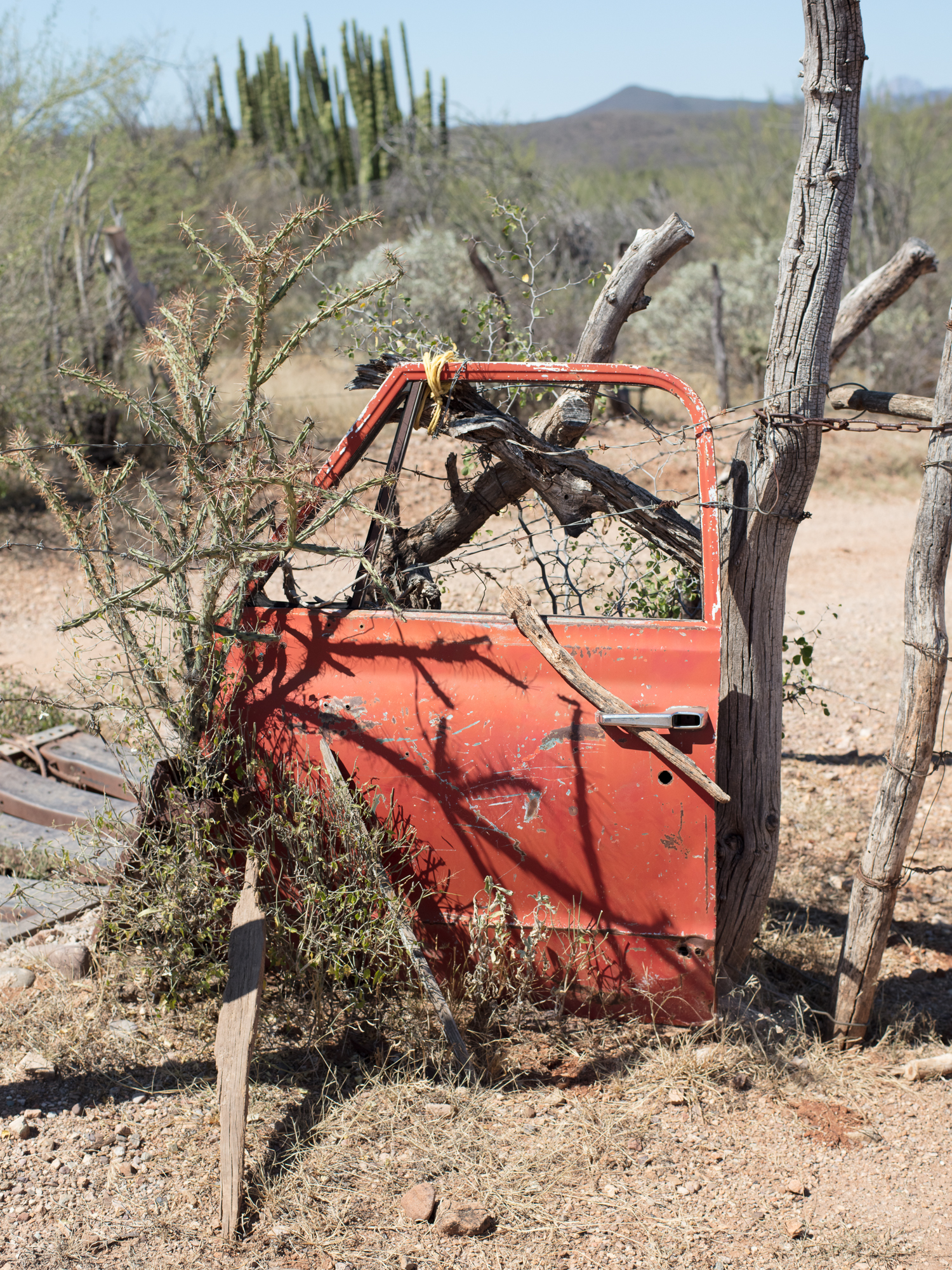
(Photo: McNair Evans)
Since all of Rosemont’s endangered plants and animals exist elsewhere, Spangle wrote in that memorandum, the fate of their respective species didn’t hang on this mine. “The U.S. portion of the jaguar’s range, including all of proposed critical habitat, is a miniscule fraction of its global range,” he argued.
Detractors howled, protesting that nowhere does the Endangered Species Act say if a species exists in Mexico it needn’t be protected here. “A bureaucrat with a bachelor’s degree is reversing Ph.D. biologists,” a staff scientist seethed to me. But few were surprised by this outcome. A Defenders of Wildlife study found that, of 6,829 endangered-species reviews by Fish and Wildlife from 2008 to 2015, none was stopped or extensively altered due to finding adverse habitat modification. In the case of Rosemont, the original drafts, Freedom of Information Act documents indicated, had been sent to the mining company, Hudbay, for comments. They had plenty.
“Because that’s where the copper is,” a mine representative told me when I asked how Hudbay could conceive of digging a vast pit in such an exquisite place as Rosemont. “I don’t hear people complaining about the copper in their cell phones or computers,” she added, before making it clear that our conversation was over.
The company’s publicity materials state that the pit and tailings would be visible from only a small stretch of the scenic highway, that the site accounts for a tiny fraction of potential jaguar habitat, and that the mine would not have any discernible effect on bird life. Hudbay claims that it has already spent millions on environmental research and remediation plans—and expects to spend millions more—for the mine, which, it says, would account for roughly 10 percent of U.S. copper production.
Hudbay has been subject to criticism from environmental and human rights activists before Rosemont. According to data published by Canada’s Environment and Climate Change agency, Hudbay’s copper smelter in Manitoba was one of the country’s biggest emitters of lead and mercury until it closed in 2010. The company is also contesting a lawsuit over alleged human rights violations at a nickel mine run by a Hudbay subsidiary in Guatemala.
The fate of its Rosemont mine may now rest with the U.S. Army Corps of Engineers. Last December, other government documents obtained through FOIA by the Arizona Daily Star revealed a preliminary finding by the corps that Hudbay’s plan to mitigate the damage to the area’s water courses and aquatic habitats fails to meet the guidelines of the Clean Water Act. Environmentalists rejoiced that Rosemont’s jaguar habitat could be saved after all.
However, following Donald Trump’s unexpected election, the corps postponed its final decision. Ominously, a week after inauguration, the new commander-in-chief overruled another corps decision, to halt work on the Dakota Access Pipeline. Next, he ordered the Clean Water Rule to be reconsidered. When he then reversed his predecessor’s denial of a permit to complete TransCanada’s Keystone XL Pipeline, fears heightened that he might similarly bless a Canadian open pit mine in Arizona’s scenic Santa Rita Mountains—especially since he nominated a former Rosemont mine lobbyist, David Bernhardt, to serve as deputy secretary of the Department of the Interior.
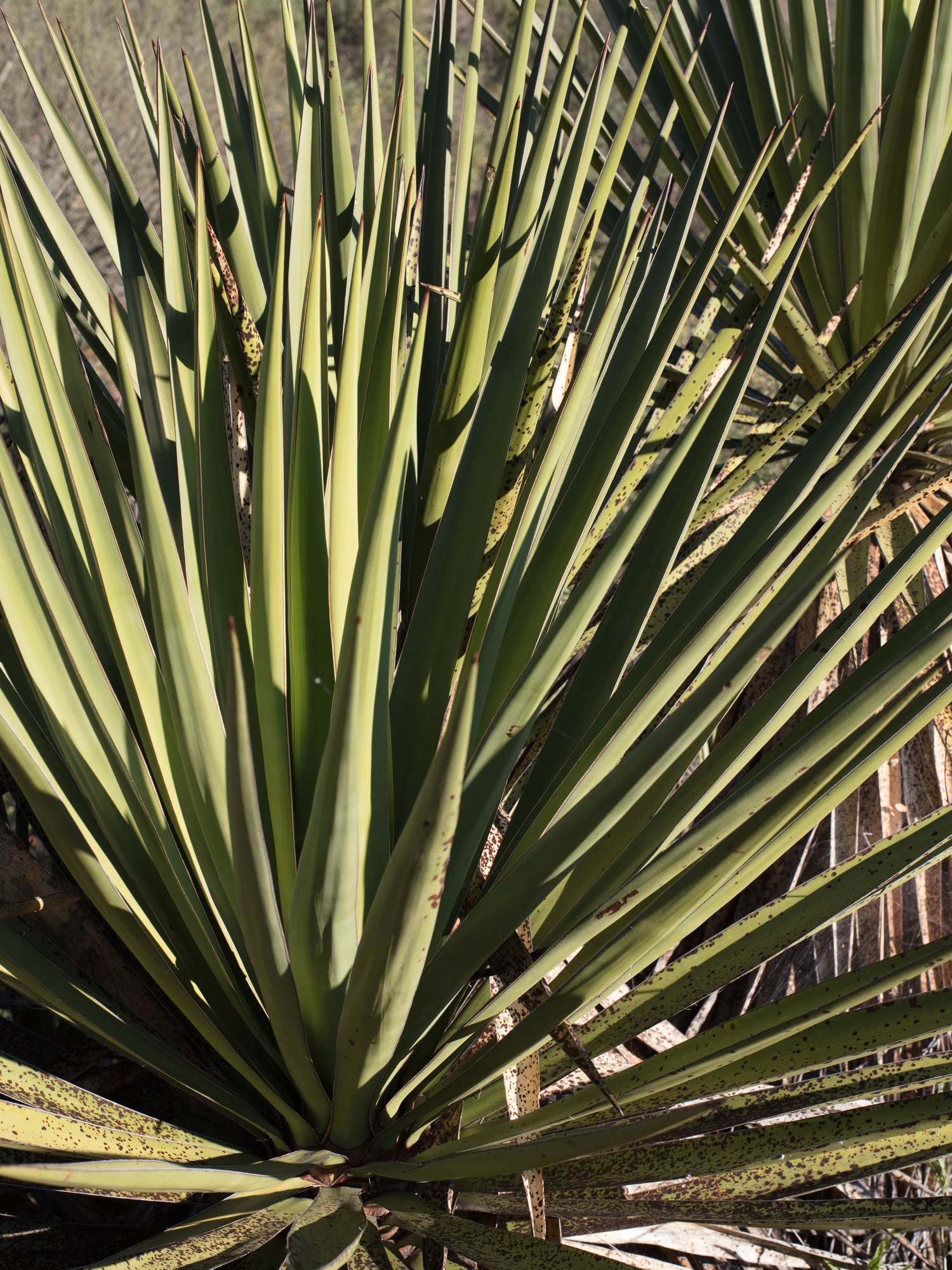
(Photo: McNair Evans)
The threats don’t stop there: The most direct corridor to the Santa Ritas from Mexico comes through the Patagonias, where I saw 10 exploratory drills last March, belonging to other Canadian companies searching for ore and relishing the access bestowed by the U.S.’s 1872 Mining Act. Rumors whispered in local barrooms suggest that bounties have been promised for any jaguar bagged before an environmentalist finds it.
But nature may prove too much for them. Last December, a trail camera captured a 200-pound male jaguar in the heavily forested security buffer around the Fort Huachuca army base, east of the Patagonias. Its photograph mysteriously appeared on the Facebook page of a local Boy Scout troop, which wouldn’t reveal how they got it. That fed suspicions among conservationists that government agencies, politically pressured to be hostile to jaguar recovery, might be sitting on other unreported sightings.
Then, this past February, the U.S. Bureau of Land Management found a jaguar photo in one of its own cameras—a new individual, its spots revealed. This animal was 60 miles above the border, near Willcox, Arizona—twice as far north as any jaguar had been seen for half a century. Moreover, the image that was released didn’t show the animal’s hindquarters, fueling speculation that it could be female—the one thing needed to establish a permanent breeding population in the United States.
“If it were male, they’d so say immediately,” Randy Serraglio told me, “because they keep claiming there are no females here. Was this photo cropped so you can’t tell its sex? I’m not a conspiracy theorist, but these agencies have a vested interest in saying that jaguars don’t live in the U.S.”
If the president’s border wall ever gets built, they likely won’t. In addition to 300 miles of Normandy fencing, more than one-sixth of the 2,000-mile U.S.–Mexico border is already lined with 16-foot steel columns placed a few inches apart, or with steel landing mats set on edge like armored plates—or, along the Rio Grande, with 18-foot levee walls, all impenetrable to any creature bigger than a lizard that lacks wings. Some 600 contractors are now bidding on Trump’s immense proposed wall, which could block the movement of wildlife, including dozens of endangered or threatened species, across nearly the entire remainder. Though the dimensions and construction of the wall are still unspecified, Trump makes no secret of his admiration for Israel’s 26-foot-high concrete security barriers.

Once, an Israeli zoologist showed me some sad gazelles and ibex just east of Jerusalem. Their dwindling, divided populations had been effectively severed by Israel’s 400-mile-long separation wall, along with their chances of survival. In April, CBD and Congressman Raúl Grijalva, whose Arizona district borders Mexico for 300 miles, sued the Trump administration, alleging it would violate federal law if it failed to file environmental impact statements before erecting a massive, multibillion-dollar wall along a geopolitical line that is meaningless to every species but our own.

A principal reason for having an Endangered Species Act, also currently in the president’s crosshairs, is that humans didn’t evolve on this planet in a vacuum, but with companions whose fate is bound with ours. One morning before dawn in Babisal, with the Milky Way still bright over the Northern Jaguar Reserve, I’d crawled from my tent, awakened by … low growling. Like a muted roar.
Only one animal in the Americas makes such a sound. Although the waning quarter-moon was high enough to cast shadows, I could see nothing. But it was coming from across the arroyo, right where jaguar tracks had appeared two days earlier.
Humans evolved to fear carnivores—that’s one reason, I’d been told, why efforts to reintroduce them meet resistance, and why some people still want to kill them. In Sonora, ranchers had learned that it was in their interest to welcome them—and, apparently, so had I. I wanted to hear this one again. In my own land.
A version of this story originally appeared in the August/September 2017 issue of Pacific Standard.





